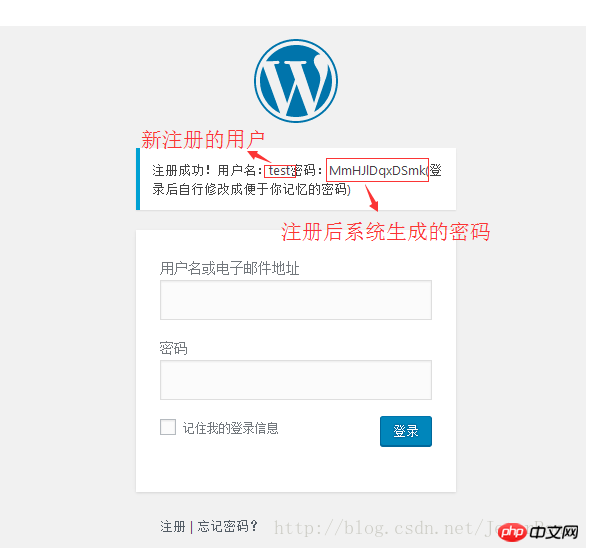
This article mainly introduces the WordPress registration interface to realize that the password is displayed directly on the page after registration. It has a certain reference value. Now I share it with you. Friends in need can refer to it
Foreword:
WordPress has undoubtedly powerful functions, but the implementation of some functions is still a little unsatisfactory. For example, after a new user registers on the website, an email filled in by the user must be sent to the user. After receiving a new password, and the password is automatically generated by the system, if for some reason the user cannot receive the email and is unable to log in, this user experience is still somewhat bad. Therefore, the generated password can be prompted after new user registration, so that the user can log in directly without waiting to receive an email.
Do some operations before starting the change:
wordpress does not allow user registration by default, so you need to log in to the backend to open the registration function.
The following is the implementation process:
First, you need to find these two files wp-login.php, user.php (/wp-includes/user.php)
1. Find this line of code under wp-includes/user.php –>function register_new_user(){}:
1 update_user_option( $user_id, 'default_password_nag', true, true ); //Set up the Password change nag.
Add this sentence
1 // 把注册的用户名和随机生成的密码写进 cookie
2 setcookie("u",$user_login);
3 setcookie("user_pass",$user_pass);below it (Note: The current WordPress 4.7.3 version is under the /wp-includes/user.php path)
2. Find this file wp-login.php
and then find this in the wordpress root directory The sentence code
1 $errors->add('registered', __('Registration complete. Please check your email.'), 'message');
is then replaced with the following code:
1 // 读取 注册后写进 cookies 的用户名 和密码 2 $errors->add('registered', __('注册成功!用户名:'.$_COOKIE["u"].' 密码:'.$_COOKIE["user_pass"].'(登录后自行修改成便于你记忆的密码)'), 'message');
Well, this will enable the newly registered user name and password to be displayed on the interface after registration.
The effect is as follows

The above is the entire content of this article. I hope it will be helpful to everyone's study. For more related content, please pay attention to the PHP Chinese website!
Related recommendations:
Wordpress's "Article RSS", "Comment RSS", "WordPress.org" deletion of RSS functions
The above is the detailed content of WordPress implements it in the registration interface. After registration, the password is displayed directly on the page.. For more information, please follow other related articles on the PHP Chinese website!
 wordpress seo
wordpress seo
 How to install wordpress after downloading it
How to install wordpress after downloading it
 Five major components of a von Neumann computer
Five major components of a von Neumann computer
 what is vb program
what is vb program
 vue references js files
vue references js files
 What are the seven principles of PHP code specifications?
What are the seven principles of PHP code specifications?
 Introduction to the meaning of += in C language
Introduction to the meaning of += in C language
 word forced line break
word forced line break
 ICP coin prospect analysis
ICP coin prospect analysis




